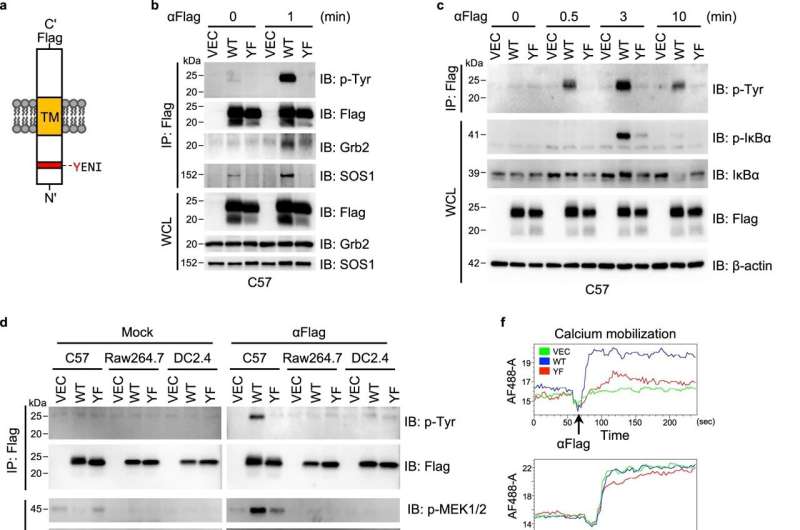This article has been reviewed according to Science X's editorial process and policies. Editors have highlighted the following attributes while ensuring the content's credibility:
fact-checked
peer-reviewed publication
trusted source
proofread
Research links immune cell receptors to asthma, inflammatory lung disease

Inhibiting a protein on the surface of immune cells could offer new strategies for treating severe asthma, Cleveland Clinic researchers found.
Researchers discovered a new way a protein called MCEMP1 contributes to severe inflammation in the airway and lungs. The discovery, published in Nature Communications, provides critical information for developing therapeutic interventions to treat long-term lung conditions, including asthma, on a biological level.
The study was conducted in a lab led by Jae Jung, Ph.D., chair of the Cancer Biology Department, director of the Infection Biology program, and director of the Sheikha Fatima bint Mubarak Global Center for Pathogen & Human Health Research.
Severe asthma is caused by airway inflammation in response to a trigger, like allergens or air pollution. The inflammation causes the airway to swell up and become narrower and stiffer, which makes breathing difficult. Asthma currently affects more than 25 million people in the U.S and 300 million people worldwide.
Inflammation is part of innate immune response, or the process the body uses to summon immune cells to combat pathogens. Inhalers treat the inflammation in the airway, but do not address the underlying biological causes of the recurring inflammation.
Mast cells release histamines and elicit other immune responses that cause allergic inflammation, so researchers examined what proteins on that cell are critical to prompting a severe immune response.
"A rapid increase in mast cell numbers is associated with these more severe cases of asthma," says Youn Jung Choi, Ph.D., a postdoctoral fellow and first author on the paper. "What we discovered is a new molecular mechanism that, if turned off, can reduce the number of mast cells and, therefore, the level of inflammation."
MCEMP1 is a surface-level protein on mast cells. Previous research implicated MCEMP1 in multiple inflammatory lung diseases in addition to asthma, including chronic obstructive pulmonary disease (COPD) and idiopathic pulmonary fibrosis (IPF).
When MCEMP1 expression was eliminated on the surface of the mast cell, researchers saw reduced airway inflammation and lung damage. The study showed that MCEMP1 was associated with elevated mast cell numbers. Researchers observed higher rates of inflammation and lung function defect when MCEMP1 was expressed on mast cells.
MCEMP1 is expressed highly in lung cells, but its expression is induced during immune response in other parts of the body as well. That shows the value in searching for MCEMP1 function in other parts of the body, Dr. Choi says.
"Understanding how this mechanism works in the lung not only provides us with a path to new therapies for asthma, but it could be a finding that helps us map out similar functions in other inflammatory diseases in the lung and throughout the body," she says.
More information: Youn Jung Choi et al, Lung-specific MCEMP1 functions as an adaptor for KIT to promote SCF-mediated mast cell proliferation, Nature Communications (2023). DOI: 10.1038/s41467-023-37873-3
















